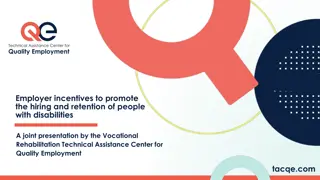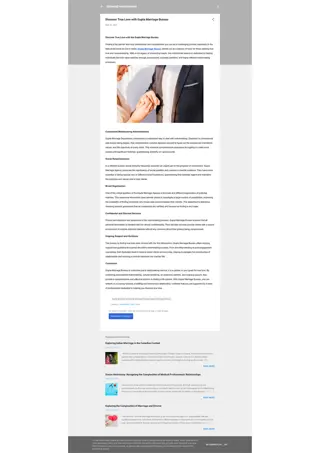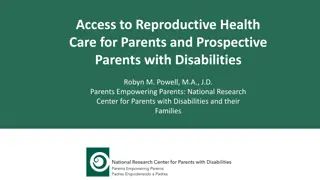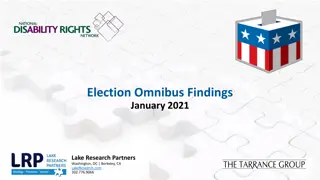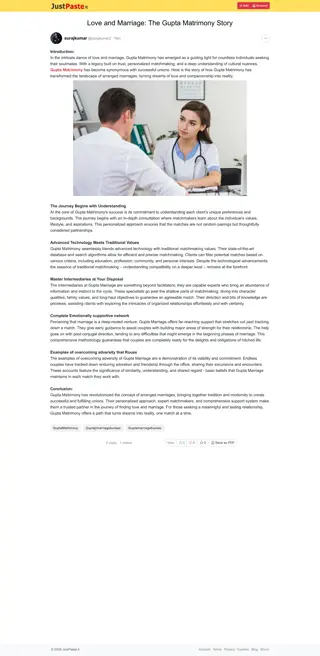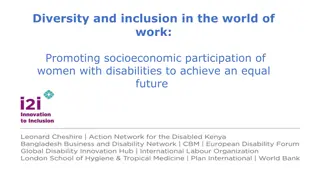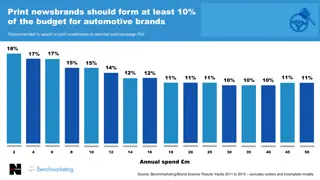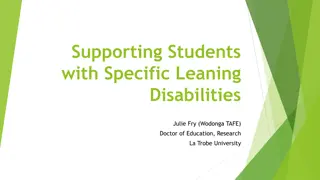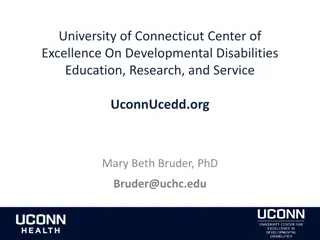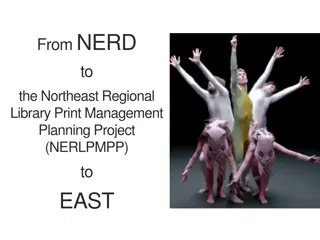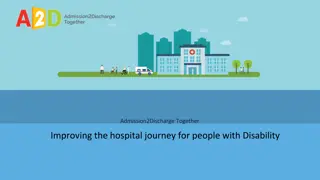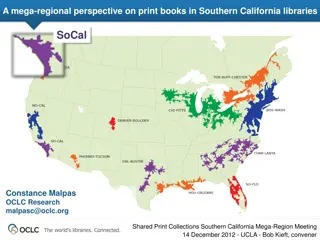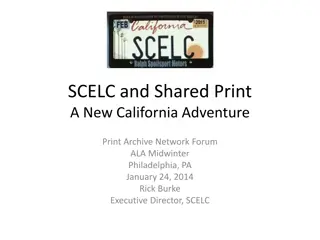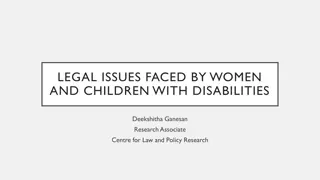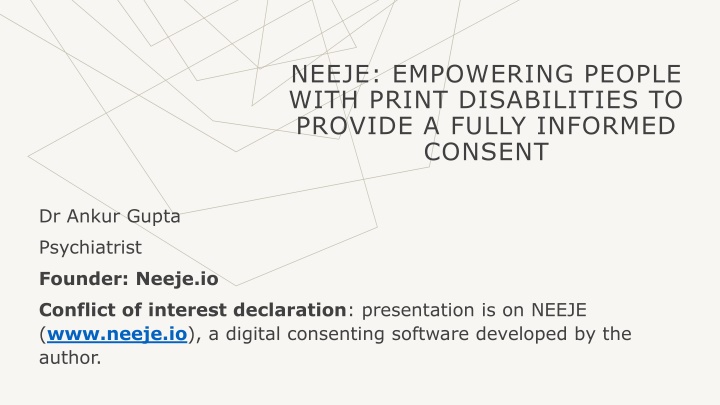
Empowering People with Print Disabilities for Informed Consent
NEEJE is a digital consent software developed to assist people with print disabilities, including those with visual impairments, in providing fully informed consent. The software aims to make information more accessible and enhance the consent process in healthcare. Learn about the challenges faced by individuals with print disabilities and the need for improved resources in engaging this population.
Download Presentation

Please find below an Image/Link to download the presentation.
The content on the website is provided AS IS for your information and personal use only. It may not be sold, licensed, or shared on other websites without obtaining consent from the author. If you encounter any issues during the download, it is possible that the publisher has removed the file from their server.
You are allowed to download the files provided on this website for personal or commercial use, subject to the condition that they are used lawfully. All files are the property of their respective owners.
The content on the website is provided AS IS for your information and personal use only. It may not be sold, licensed, or shared on other websites without obtaining consent from the author.
E N D
Presentation Transcript
NEEJE: EMPOWERING PEOPLE WITH PRINT DISABILITIES TO PROVIDE A FULLY INFORMED CONSENT Dr Ankur Gupta Psychiatrist Founder: Neeje.io Conflict of interest declaration: presentation is on NEEJE (www.neeje.io), a digital consenting software developed by the author.
DEFINING PRINT DISABILITY Print disability is the difficulty or inability to comprehend and engage with printed material This can be due to language difficulties or visual impairment or both NEEJE has been developed to help people with print difficulties including those who suffer from visual impairment
INFORMED CONSENT IN HEALTHCARE Informed consent is the process by which a patient is informed about the nature and risks of a medical procedure, and agrees to undergo the procedure voluntarily Clinicians have a legal responsibility to obtain informed consent for every intervention It is essential that the information provided to patients is presented in an accessible manner
EXTENT In 2015, there were 592,000 people (more than 2.5% of the population) with vision impairment in Australia (Australian Bureau of Statistics) In New Zealand, around 170,000 people have a vision impairment that impacts their daily life (around 3.4% of the population) These estimates may not capture all, as not all may seek or receive a diagnosis HEALTHCARE ORGANISATIONS GENERALLY DO NOT DEDICATE ADEQUATE RESOURCES IN ENGAGING THIS SIGNIFICANT SUBSET OF POPULATION
USUAL PRACTICE Consenting is paper based in almost all hospitals and clinics Audio-Visual Aids not readily available Braille is available but Around 10% of people who are blind or have low vision in the United States use Braille as their primary reading method (American Foundation for the Blind) Learning Braille can be a time-consuming and challenging process, and not all individuals with low vision may have access to resources or support to learn this skill
PATIENTS' PERCEPTIONS OF WRITTEN CONSENT: QUESTIONNAIRE STUDY 1 in 10 patients reported that they did not know what they agreed to when they signed the consent form 40% reported that they had signed it just so that they could have their operation Almost two thirds thought it gave doctors control over what happened Ref: A. Akkad, C. Jackson, S. Kenyon, M. Dixon-Woods, N. Taub and M. Habiba; BMJ 2006 Vol. 333 Issue 7567 Pages 528
POSITION STATEMENTS: AUSTRALIA The Australian Medical Association (AMA) position statement on Informed Consent and Decision Making (2014), The Royal Australian and New Zealand College of Ophthalmologists (RANZCO) guidelines on Informed Consent (2014) National Safety and Quality Health Service Standard on Clinical Governance (2017) Emphasise the need to provide information in a format that is accessible and easy to understand for patients with communication difficulties, including those with visual impairments.
POSITION STATEMENTS: NEW ZEALAND The New Zealand Medical Association (NZMA) has published a Code of Ethics (2014) The Health and Disability Commissioner (HDC) guidelines on Informed Consent (2015) Health and Disability Services Standards (2019)
REGULATORY FRAMEWORK: AUSTRALIA The Australian Human Rights Commission Act 1986 The Disability Discrimination Act 1992 The Australian Health Practitioner Regulation Agency (AHPRA)
REGULATORY FRAMEWORK: NEW ZEALAND The New Zealand Bill of Rights Act 1990 Health and Disability Services Consumers Rights (2014) The Health Practitioners Competence Assurance Act 2003 (HPCA) The New Zealand Disability Strategy 2016-2026
Stroud v. United States (2001); Stewart v. Ackland (2010), Australia; O v. District Health Board (2018) New Zealand Were visually impaired Claimed that they did not receive adequate information to give informed consent for a medical procedure. Argued that the consent form was not available in a format that he could read, or a verbal explanation of the procedure The court ruled in favour of the plaintiffs, stating that the hospital had failed to provide adequate informed consent, and awarded damages
Greenberg v. Miami Children's Hospital Research Institute, Inc. (2003) The plaintiff was visually impaired, Claimed that he did not give informed consent to participate in a research study. Argued that he did not receive the consent form in a format that he could read, and that he did not receive a verbal explanation of the study. The court ruled in favour of the plaintiff, stating that the hospital had failed to provide adequate informed consent, and awarded damages
Abigail Alliance for Better Access to Developmental Drugs v. Minister for Health and Ageing (2009) The plaintiff was visually impaired Claimed that he did not have access to information about an experimental drug Argued that the government had failed to provide information about the drug in a format that he could read or in an alternative format The court ruled against the plaintiff, stating that the government had met its obligations to provide information in a reasonable and appropriate manner
Reasonable patient standard: Montgomery vs. Lanarkshire Health Board 2015 The UK Supreme Court ruled that the standard for informing patients about the risks benefits and alternatives of treatment will be determined by what a reasonable patient deems important This standard is not met in a significant proportion of healthcare interventions in people with visual impairment
Research Findings Published studies have found that patients who received an audio recording of their informed consent discussion reported higher levels of satisfaction and understanding Several authors have concluded that audio recordings can be a useful tool for improving informed consent in patients with visual impairments
WHAT PATIENTS WANT Time to go through the information in a less anxiety provoking situation. Individualised information about their unique health status and proposed procedure, benefits & risks More specific than exhaustive Make the form simpler, shorter, and in plain English
WHAT NEEDS DONE Providing alternative formats for informed consent materials, such as audio recordings or Braille versions Ensuring digital platforms are designed to be accessible for people with visual impairment Providing interpreters or translators Offering additional support
Meaningful Informed Consent with NEEJE LAYOUT TOOLS PROCESS
Meaningful Informed Consent with NEEJE: Layout Interface built as per WCAG 2.0 AA accessibility standards Some of the accessibility features provided by NEEJE.io include: High contrast settings Adjustable font sizes Screen reader compatibility Keyboard accessibility Captioning for videos
Meaningful Informed Consent with NEEJE: TOOLS The only digital informed consent software in the world that allows audio recording of consultations Clinicians can start recording at the click of a button The recording is automatically downloaded to the clinicians device on stopping It is not held on cloud servers for security reasons Clinician can email the recording to the patient Patients can review their consultations at home and come to an informed decision
Meaningful Informed Consent with NEEJE: Process1 Clinical appointments are stressful & making decisions about procedures is even more so Stress is amplified if the information is difficult to understand Most consent forms are signed on the day o the procedure which is even more disadvantageous for people with visual impairment NEEJE allows patients time to review information at home and sign the form with a clear understanding of their options and chosen procedure, well before going into the procedure.
Meaningful Informed Consent with NEEJE: Process2 There is an ability to involve support persons who can receive information direct from the clinician and help make that important decision Patients with print difficulties owing to language barriers can choose to have an interpreter Patients are encouraged to put in writing their concerns, needs and wants which their clinician has to review and consider in the decision making
OUTCOME Empowering individuals with visual impairment to take an active role in their healthcare decisions and participate more fully in the informed consent process Improving understanding and comprehension of medical procedures and potential risks and benefits for individuals with visual impairment Reducing the risk of adverse outcomes Promote equity and accessibility Achieve the reasonable patient standard
THANK YOU Dr Ankur Gupta MBBS FRANZCP FRCPsych (UK) MBA ankur@neeje.io www.neeje.io


